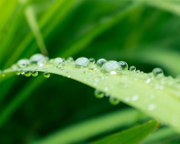Yates Account
Join now
Create a Yates account today!
Sign up to join the Yates Garden Club for monthly e-mails packed with seasonal inspiration, tips for success & exclusive promotions.
Plus if you’re a Garden Club member you can take part in the Yates Growing Community - a blog to share successes, get advice & win prizes in fun challenges along the way!

Forgot password
Enter the email address associated with your account, and we'll email you a new password.

Lawn grasses can be divided into two groups depending on their growth pattern: they've evolved to use divergent methods of photosynthesis, so one type makes the most of a cool climate, while the other is perfectly adapted for a warmer climate.
These contrasting types are known as Cool Season grasses, or Warm Season grasses.
Cool Season Grasses
Look best during their autumn and spring growing seasons.
Cool Season Grasses are mostly soft, fine-textured grasses with intense green colour; they're quick and easy to establish from seed. They can generally cope with frost, moist soils and low sunlight hours; some species offer excellent shade tolerance. They aren't particularly drought tolerant, so they do need watering during hot summers. Cool season grasses are the dominant lawn type in New Zealand.
Fine Fescue
Kentucky Bluegrass
Perennial Ryegrass
Tall Fescue
Warm Season Grasses
At their best in late spring, summer and early autumn.
Warm season grasses tend to grow best North of Hamilton; or further South in coastal regions with no frost. They're very drought tolerant and hard-wearing, but need plentiful sunlight and warmer temperatures to thrive. These species are slower to establish and tend to go dormant over winter, but during their warm growing season they need regular (and low height) mowing to keep them looking tidy.
Warm season grasses are more sensitive to selective weedkillers (e.g. Yates Weed'n'Feed, Yates Turfix) than cool season varieties, so double-check your weedkiller is compatible before spraying. Risk is lessened during winter while grass is dormant, but much higher during hot weather or periods of drought.
























Share
Share this article on social media